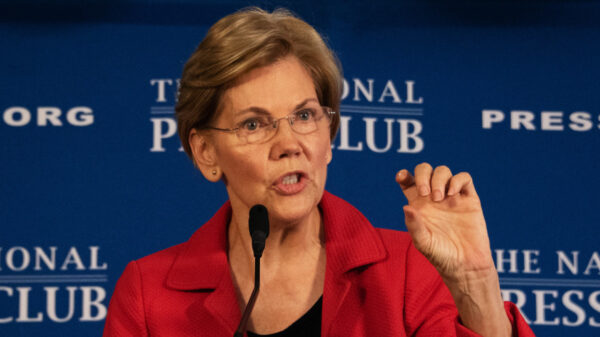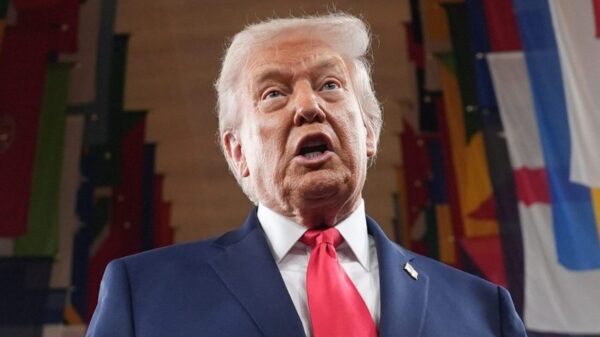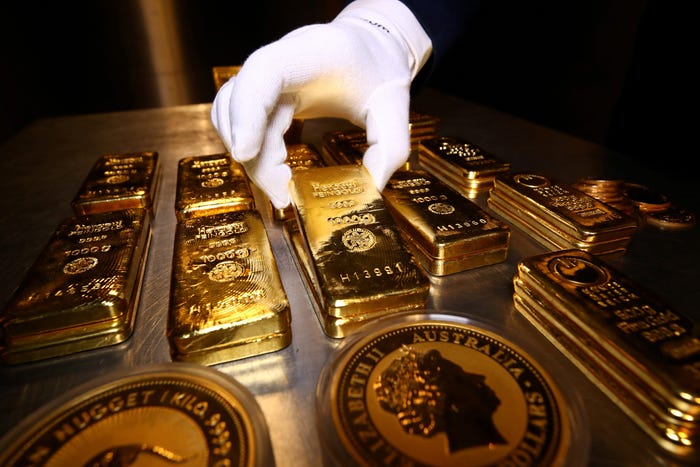Gold has reached a new milestone, hitting a record high of over $3,800 an ounce, marking a 47% increase in value for 2025. This surge in gold prices is not only benefiting the metal itself; it is also driving significant gains in the stock market, particularly for companies linked to gold production.
Zijin Gold International, the overseas arm of Zijing Mining, experienced a remarkable debut on the Hong Kong Stock Exchange. The company’s shares jumped by 66% on their first trading day, reflecting the strong demand from investors eager to capitalize on the ongoing gold rally. The retail portion of Zijin Gold’s $3.2 billion IPO was oversubscribed by an astonishing 241 times, according to regulatory filings.
Drivers Behind the Gold Surge
The recent climb in gold prices has been largely driven by concerns surrounding a potential US government shutdown and rising expectations regarding interest rate cuts by the Federal Reserve. These factors have created a favorable environment for gold, which is traditionally viewed as a safe haven during times of economic uncertainty.
Analysts note that the sustained high price of gold is likely to boost performance for mining companies like Zijin Gold. Criss Wang, a market analyst on the Smartkarma platform, stated, “For mining enterprises like Zijin Gold in the upstream of the gold industry chain, a sustained high and rising gold price will drive performance growth, as the rise in gold prices will directly boost its revenue and profits.”
The impact of the gold surge has also been felt in the exchange-traded fund (ETF) market. Gold-linked ETFs, such as the VanEck Gold Miners ETF and Sprott Gold Miners ETF, have more than doubled in size this year. Major mining corporations have similarly benefitted; shares of Newmont, the world’s largest gold miner, have risen by 127%, while Canada’s Barrick Mining has seen a 114% increase over the same period.
Geopolitical Factors and Market Sentiment
This year has proven to be particularly favorable for gold, marking its best performance since the 1970s. Several macroeconomic factors have played a critical role in this phenomenon. The decline in bond yields, driven by anticipated Federal Reserve rate cuts, has made gold a more attractive investment. Additionally, persistent inflation supports gold’s appeal as a safeguard against rising prices.
Geopolitical uncertainties, including the implications of Donald Trump‘s potential second term as president, further enhance gold’s status as a safe haven asset. Even prior to Trump’s election, gold prices had begun to rise due to consistent buying by central banks.
Michael Hsueh, a research analyst at Deutsche Bank, noted the dual forces driving demand: “The fact that ETF demand has re-entered the scene so forcefully means that there are two forms of ‘aggressor’ bids for gold, from central banks and ETF investors. This helps to explain why gold continues to perform so well.”
As the gold market continues to evolve, its impact on equities and investor sentiment remains significant. With both retail and institutional investors flocking to gold-linked opportunities, the outlook for the precious metal and its associated industries looks promising in the near term.








































































